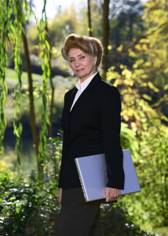Global fresh water advocate supports San Diego wastewater recycling plan
Press release
Global fresh water advocate supports San Diego wastewater recycling plan
With Total Water Management, drought stricken California could have all the water it needs reports radio host Sharon Kleyne
Hear the Sharon Kleyne Hour Power of Water on World Talk Radio, Voice America, Green Talk Network and Apple iTunesp
The city of San Diego, California, because of drought related fresh water shortages, is moving forward with a plan to recycle wastewater - also called "sewage" - into drinking water.* Radio host Sharon Kleyne supports the San Diego plan as part of her global advocacy of "Total Water Management" (TWM). According to Kleyne, by recycling water that San Diego already owns, the need to constantly import new water could be greatly reduced.

*Spagat, E, "San Diego looks to sewers as water source," Yahoo News (via AP), November 20, 2014
http://news.yahoo.com/dry-san-diego-look-sewers-075210011.html;_ylt=AwrTWVVSr3RUPG8A9a3QtDMD
The syndicated Sharon Kleyne Hour™ Power of Water® radio show, hosted by fresh water advocate Sharon Kleyne, is heard weekly on VoiceAmerica and Apple iTunes. The show is sponsored by Bio-Logic Aqua Research, a global research and technology center founded by Kleyne and specializing in fresh water, the atmosphere and dehydration. Nature's Tears® EyeMist® is the Research Center's signature Hand Held Portable Personal Misting Humidifier™ for dry eyes.
Kleyne will discuss TWM and San Diego's recently announced fresh water recycling plan on her Sharon Kleyne Hour™ Power of Water® radio broadcast of December 1, 2014 (Live show or podcast: http://www.voiceamerica.com/show/2207/the-sharon-kleyne-hour).
TWM is a concept promoted by Kleyne, British Journalist Fred Pearce, and Colorado State University Engineering professor Neil Grigg, PhD.† In TWM, Kleyne explains, fresh clean water is sold to the public and used for numerous purposes, all of which involve dirtying the water. The objective of TWM is to capture 100% of the dirty wastewater, recycle it, and reuse it as clean water. In such a system, the need to constantly import water from outside sources or pump it from the ground could be eliminated - even during an extended drought.
† "Fresh water recycling system would not require outside water reports international water journalist," PR Web, October 13, 2014
http://www.prweb.com/releases/2014/10/prweb12243215.htm
The City of San Diego currently obtains 80 percent of its drinking water from the Colorado River, says Kleyne. The State of Colorado, the river's source, is experiencing its own record drought, as are Utah, Arizona and Nevada, states through which the Colorado flows. California, in addition to having the largest population of any state, also leads the nation in agricultural production, nearly 100 percent of which relies on irrigation water.
Most sewage returned to the water company via drain pipes, Kleyne notes, is treated only to render the water safe and non-polluting when released into a river or reservoir. It is not treated to drinkable (or potable) standards. In recent years, some water companies have been experimenting with "ground water replenishment," in which treated, non-polluting water is returned to an underground aquifer. This recharges the aquifer, according to Kleyne, and could increase the amount of water that evaporates into the atmosphere. If done on a large enough scale, ground water replenishment could help end a drought.
The City of San Diego, says Kleyne, lacks the natural resources for ground water replenishment.
In the indirect wastewater recycling system proposed by San Diego, used water would be treated to near purity and deposited into the same reservoir from which fresh drinking water is drawn. At that point, the recycled wastewater is as pure as water already in the reservoir but neither is potable. Water from the reservoir is processed through a final purification plant before being sold as drinking water.
By contrast, Kleyne notes, in a direct wastewater recycling system, water is 100 percent safe and potable when it comes out of the initial sewage treatment plant. Direct recycling systems are expensive and many consider the water repellent.
The City/Nation of Singapore, according to Kleyne, is the global model for TWM, water recycling and water independence. Singapore produces what they call "NewWater" which is fully recycled sewage water. NewWater is slowly gaining acceptance. Much of Singapore's drinking water, however, is indirectly recycled wastewater, much like San Diego is proposing .The tiny but densely populated island nation leads the world is capturing and recycling wasterwater.
The key to the Singapore model, and to any other water innovation, Kleyne believes, is to allow water companies to fully and profitably recover the cost of water treatment. Under such a financial structure, inexpensive water would remain available for those who qualify but rates would rise for industrial and agricultural customers. Sewage sludge, the residue left from wastewater treatment, according to Kleyne, is also a potential profit source.
Under TWM, any water purified to drinkable standards would be used for only drinking. It would not be used for lawns, dishwashing, toilets, agriculture or industry.
Health + Diet
Environment
|
|
 Sharon Kleyne
Sharon Kleyne